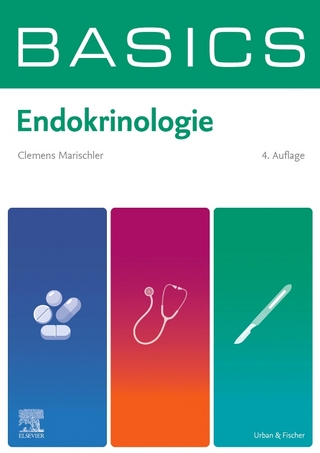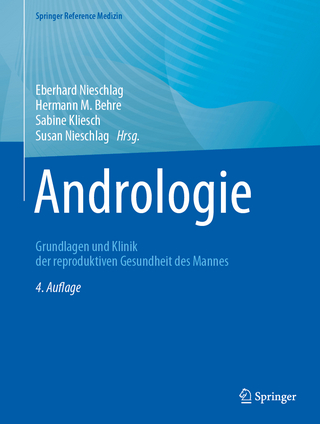
Genitourinary and Adrenal Gland Synoptic Reporting
Seiten
2024
|
1st ed. 2024
Springer-Verlag New York Inc.
978-1-4939-2586-5 (ISBN)
Springer-Verlag New York Inc.
978-1-4939-2586-5 (ISBN)
Genitourinary and Adrenal Gland Synoptic Reporting provides current management strategies with an emphasis on which synoptic elements are used to guide treatment. Each organ chapter will have 5 subdivisions: 1) synoptic overview, 2) pTNM staging, 3) non-pTNM synoptic elements, 4) grossing issues and 5) post-surgical management.
Genitourinary and Adrenal Gland Synoptic Reporting provides current management strategies with an emphasis on which synoptic elements are used to guide treatment. The first introductory chapter explains the need for improved synoptic reporting. The following 9 chapters each cover a separate organ. All genitourinary and adrenal organs will be included covering common, large volume organs such as the prostate as well as less frequently encountered and much more poorly described organs such as the penis and scrotum. Each organ chapter will have 5 subdivisions: 1) synoptic overview, 2) pTNM staging, 3) non-pTNM synoptic elements, 4) grossing issues and 5) post-surgical management. The pTNM staging section reviews each pTNM classification with photomicrograph examples and focus on controversies in staging. The non-pTNM synoptic element section describes other elements that are required or optional but are not used in pTNM staging. Photomicrograph examples are provided. Elements which have no clinical significance are highlighted. The next section, grossing issues, describes pitfalls in grossing which prevent accurate staging. The last section, post-surgical management, briefly explains which elements in the synoptic report change patient management, allowing pathologists to focus time and resources on the most relevant parameters in their report. The chapters utilize a structured outline format and tables to facilitate rapidly identifying needed information. Numerous photomicrographs are included and the text will be limited to information needed for daily clinical practice. As such, Genitourinary and Adrenal Gland Synoptic Reporting is user-friendly and practical and will be of great value to pathologists with a wide range of experience, from 0 years in practice to the seasoned practitioner, demonstrating that these educational gaps are not met by recent residency training or from extensive practice experience.
Genitourinary and Adrenal Gland Synoptic Reporting provides current management strategies with an emphasis on which synoptic elements are used to guide treatment. The first introductory chapter explains the need for improved synoptic reporting. The following 9 chapters each cover a separate organ. All genitourinary and adrenal organs will be included covering common, large volume organs such as the prostate as well as less frequently encountered and much more poorly described organs such as the penis and scrotum. Each organ chapter will have 5 subdivisions: 1) synoptic overview, 2) pTNM staging, 3) non-pTNM synoptic elements, 4) grossing issues and 5) post-surgical management. The pTNM staging section reviews each pTNM classification with photomicrograph examples and focus on controversies in staging. The non-pTNM synoptic element section describes other elements that are required or optional but are not used in pTNM staging. Photomicrograph examples are provided. Elements which have no clinical significance are highlighted. The next section, grossing issues, describes pitfalls in grossing which prevent accurate staging. The last section, post-surgical management, briefly explains which elements in the synoptic report change patient management, allowing pathologists to focus time and resources on the most relevant parameters in their report. The chapters utilize a structured outline format and tables to facilitate rapidly identifying needed information. Numerous photomicrographs are included and the text will be limited to information needed for daily clinical practice. As such, Genitourinary and Adrenal Gland Synoptic Reporting is user-friendly and practical and will be of great value to pathologists with a wide range of experience, from 0 years in practice to the seasoned practitioner, demonstrating that these educational gaps are not met by recent residency training or from extensive practice experience.
1. Introduction.- 2. Prostate.- 3. Kidney.- 4. Bladder.- 5. Renal Pelvis/Ureter.- 6. Testis.- 7. Penis.- 8. Scrotum.- 9. Genitourinary Sarcomas.- 10. Adrenal Gland.
| Erscheint lt. Verlag | 6.8.2024 |
|---|---|
| Zusatzinfo | 180 Illustrations, color; 30 Illustrations, black and white; Approx. 250 p. 210 illus., 180 illus. in color. |
| Verlagsort | New York |
| Sprache | englisch |
| Maße | 155 x 235 mm |
| Themenwelt | Medizinische Fachgebiete ► Innere Medizin ► Endokrinologie |
| Medizin / Pharmazie ► Medizinische Fachgebiete ► Urologie | |
| Studium ► 2. Studienabschnitt (Klinik) ► Pathologie | |
| Schlagworte | grossing issues • histopathologic interpretation • non-pTNM synoptic elements • pTNM staging • synoptic overview |
| ISBN-10 | 1-4939-2586-5 / 1493925865 |
| ISBN-13 | 978-1-4939-2586-5 / 9781493925865 |
| Zustand | Neuware |
| Informationen gemäß Produktsicherheitsverordnung (GPSR) | |
| Haben Sie eine Frage zum Produkt? |
Mehr entdecken
aus dem Bereich
aus dem Bereich
Grundlagen und Klinik der reproduktiven Gesundheit des Mannes
Buch | Hardcover (2023)
Springer (Verlag)
CHF 349,95


